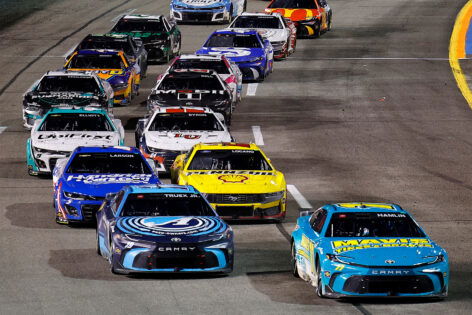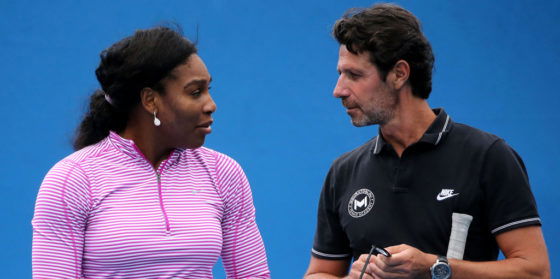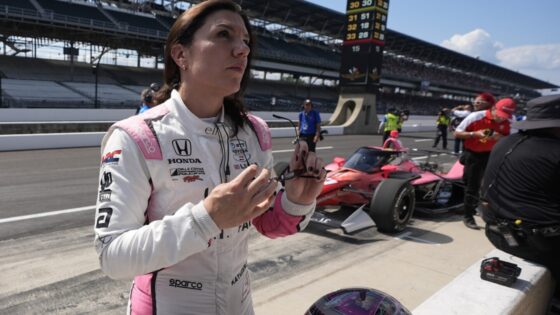The evolution from open-wheel racing to stock car competition has revealed unforeseen difficulties to all racing legends regardless of their achievements. Nigel Mansell’s 1993 rookie victory in IndyCar racing left the motorsport world in awe because it made every other crossover failure more enigmatic. During Max Papis’ inaugural NASCAR effort, he encountered a weird feeling of a soft and lengthy brake pedal in 2006, which led him to better grasp the fundamental dissimilarities between racing disciplines. Their dominance in open-wheel racing rarely translates into similar success on NASCAR’s oval tracks.
This phenomenon has often puzzled motorsport fans. After all, it’s still racing. Four wheels, high speeds, and talented drivers. So why the struggle? Recently, versatile motorsport legend Max Papis shed light on why open-wheel drivers find NASCAR so challenging. In the latest episode of Espresso With Max Papis, the former F1, IndyCar, and NASCAR driver offered a compelling perspective on what sets stock car drivers apart — and why they might just be the best racers in the world.
The challenges of transitioning to NASCAR
Max Papis discussed the difficulties open-wheel drivers face in NASCAR, citing examples like himself, Montoya, and Dario Franchitti. He noted, “The stock car guys are very, very good. They are specialized, they are some of the best racers around the world.” This specialization makes it tough for open-wheel drivers to adapt, as they must learn new techniques.
Drivers like Juan Pablo Montoya and Dario Franchitti have struggled in NASCAR. Montoya, despite his IndyCar success, managed only two wins in 256 Cup Series starts. Franchitti, a three-time IndyCar champion, attempted just ten Cup Series starts before returning to IndyCar. Max Papis himself has competed in 36 Cup Series races without a win, highlighting the challenges faced by open-wheel drivers transitioning to stock cars.
Papis highlighted the technical differences between open-wheel and stock car racing. He explained that in NASCAR, “The brake pedal was really long, was soft,” which is unlike the firm brakes used in open-wheel racing. This difference affects how drivers approach corners and control speed.
In open-wheel cars, brakes are designed for high-speed deceleration, using advanced materials like carbon-carbon to provide a firm pedal feel and rapid heat dissipation. In contrast, NASCAR’s softer brake pedal is used more as “ride height control” on ovals. They set up the car for corners rather than stopping. This fundamental difference in braking technique poses a significant challenge for open-wheel drivers transitioning to NASCAR.
Another layer of difficulty, according to Papis, is the improvisational skills NASCAR drivers possess. “Stock car guys, they’re really, really good at what I say improvise with precision,” he emphasized. NASCAR racing often demands precise, instinctive split-second decisions in unpredictable conditions. This skill, honed from years of racing on ovals, is something that open-wheel drivers, despite their polished skills, struggle to master.
Papis also admitted that his own transition to NASCAR wasn’t smooth despite his vast experience. “When I joined stock car, the feeling was really strange,” he recalled. This adjustment, combined with the stock car drivers’ deep-rooted understanding of oval dynamics, often makes open-wheel drivers feel like rookies. In Papis’ eyes, this is what elevates NASCAR drivers to a different level — proving that stock car racing is a beast of its own.
Open-wheel drivers who found success in NASCAR
While many open-wheel drivers have struggled to transition to NASCAR, some have managed to achieve notable success. One prominent example is Tony Stewart, who began his career in open-wheel racing, winning the 1997 Indy Racing League championship before moving to NASCAR. In NASCAR, Stewart secured three Cup Series championships (2002, 2005, and 2011) and amassed 49 Cup Series wins, solidifying his status as one of the sport’s greats.
A.J. Allmendinger also made a successful switch from open-wheel to NASCAR. After a promising start in Champ Car, where he secured five wins, Allmendinger transitioned to NASCAR and found success. He particularly excelled on road courses. He secured a memorable win at Watkins Glen in 2014 and has been a consistent competitor in both the Cup and Xfinity Series.
Dan Gurney also found success in NASCAR. After a lackluster career in Formula 1, Gurney finally found success in the NASCAR Cup Series. In the 16 races he participated in, he managed to get 5 wins, 10 top-10s, and 3 poles. Similarly, A. J. Foyt amassed 7 wins, 36 top-10s, and 9 poles in his NASCAR Cup Series career.
Despite these examples, the transition from open-wheel to NASCAR remains challenging for many drivers. However, these exceptions demonstrate that with the right combination of talent and experience, open-wheel drivers can indeed thrive in stock car racing.
Max Papis will return with a part 2 on ‘Why Open Wheel Drivers Struggle in NASCAR’ soon. It will be interesting to see what new insights he brings to the table. Given his vast experience across multiple racing disciplines, Papis might dive deeper into the technical nuances or even share first-hand stories from his career. The anticipation builds as we await the second chapter of this fascinating discussion.
The post Versatile Motorsport Legend Emphatically Picks the Superior Motorsport Form in the World appeared first on EssentiallySports.



